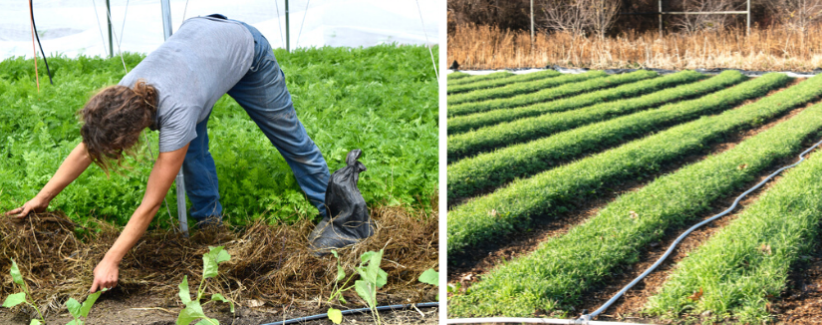Energized by Mulch!

In the life of a farmer, as much as deep winter is for reflection and quiet, it is also a time of intricate planning, preparations, and dreaming. Those long days of summer light are so far off, yet in just a short couple of months a rebirth will be upon us.
This season I am particularly energized by mulch, which is any material that is spread over the soil to protect and nourish life above and below its surface. It can take many forms, such as cover crops, compost, leaves, wood chips, salt marsh hay, and even manmade forms of landscape fabric and silage tarps. As my own relationship with the land develops, I try to listen to her messages and understand her patterns. Among them is that she never leaves soil uncovered. I invite you to observe this yourself: What covers the ground?

This year we will double the amount of compost that we normally spread, applying a total of 240 yards. This will add a one-inch layer of compost to each of our 388 beds. Compost feeds the soil with microbes, provides nutrients for our crops, smothers weeds, increases organic matter, and improves water-holding capacity. In addition to mulching our bed tops, we will also mulch all of our pathways using natural materials, such as leaves or wood chips. This will suppress weeds and introduce more fungal and bacterial communities to our soil. Lastly, we will grow a variety of cover crops this year. Cover crops are considered a living mulch that builds life within the soil. This summer on the farm, be on the lookout for buckwheat, sorghum sudangrass, winter rye, clover, oats, and field peas!

While spreading mulch is time consuming, it is worth it for the benefits it provides. Over time, by using mulch year after year, we will spend less time weeding, bed-shaping, and fertilizing crops. Not to mention that mulching is a favored and accessible task for volunteers of all ages and a variety of abilities. The farmers enjoy some of our best conversations with volunteers as we spread handfuls of mulch from bed top to bed top.